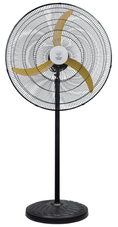How does your rice cooker make perfect rice without burning it? Science, that's how. Appliance Science looks at how rice cookers work.
One of the great things about technology is how it frees people from ordinary tasks. Fried rice is one of them. If you have ever cooked by hand, you will know how troublesome it is. You have to watch it closely: distracted, it boils and dries, burns the rice at the bottom, and destroys the rest. Fortunately, in most modern kitchens, you don't have to worry about this, because a cheap gadget called an automatic rice cooker can handle this problem for us. When rice is heated, it can reduce the heat and keep it warm without burning. How did it do that?
The short answer is by paying attention to the temperature. The long answer is by paying attention to the temperature in a fuzzy, casual sort of way. I'll look at the short answer in this column, and the long answer in the next one.
The earliest automatic home rice cookers came out in the late 1950s from companies like Toshiba. Commercial models had been around for a while before this, using a variety of techniques to measure the doneness of the rice, but the first home models relied on the fact that water conducts heat better than rice does, and that it boils at 100℃ (212℉) at sea level.
Meanwhile, the rice is cooking, absorbing the water into its structure, which is mainly composed of starch. Starch is mostly composed of long strings of sugar molecules tied together, with a few other chemicals thrown in. When they are heated, these long sugar strings grab onto passing water molecules in a process called hydrogen bonding: the hydrogen in the water weakly bonds to the oxygen atoms that are poking out of the sides of this chain. Because of this, the rice grains absorb the water, and become less well connected to each other, a process called gelatinization.
When the rice has absorbed all the water, the heater is still pumping heat into the bowl along with the rice, but it doesn't have any loose water left to remove it by boiling, so the temperature of the bowl quickly rises.
That sudden temperature bump triggers the mechanism inside the rice cooker to turn the heat down or off, because the rice is done. The first rice cookers (and many cheap models today) used a bimetallic switch, where two metals expand at different rates when heated, triggering at just over 100℃ and releasing a latch, producing the familiar "clunk" that lets you know the rice is done.
















